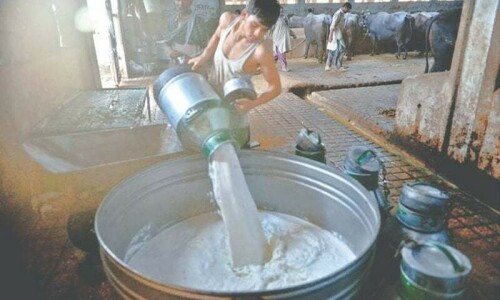SAVING is crucial for attaining a higher level of investment — a pre-requisite for higher economic growth.
The saving rate in Pakistan has historically remained low as opposed to peer countries at similar levels of development. It has been persistently declining in the last two decades. It fell from a peak of 20.6 per cent of GDP in 2002-03 to 11pc in 2018-19. National savings are predominantly driven by private savings as public savings have usually been negative owing to large fiscal deficits.
Within private savings, household savings represent the major share of more than 85pc. Corporate savings contribute the rest to private savings. Moreover, the average household saving rate is likely to be muddled up in the considerable variation in savings across households at different points in the national income distribution.
I have used household-level data from the latest Household Income and Expenditure Survey (HIES) for 2018-19 conducted by the Pakistan Bureau of Statistics (PBS) for this article. The average household savings rate for all households was 9.2pc in 2018-19. An earlier edition showed that the average household savings rate was 13.5pc in 2011-12.
A significant number of households even in the upper end of income distribution have an excess of expenditure over income
This indicates that households are now saving a lower proportion of their incomes than they did seven years ago. The fall in savings can be attributed to the deteriorating macro-economic conditions in Pakistan over the last decade or so. Economic growth has averaged just under 4pc over the last 10 years while inflation has been on a rising trajectory especially in the last few years.
It is important to point out that at the national level only 45pc of households reported that they saved a portion of their income while the savings reported by the majority of households were negative or zero in 2018-19.
A further disaggregated analysis using HIES 2018-19 data shows that the average savings rate for households in the 20th percentile of the income distribution was negative at 13.4pc. Only 26pc of the households in this bracket had positive savings. The remaining 74pc had negative or zero savings. In fact, the mean savings rate for households in the 40th and 60th percentiles of income distribution is also negative at 5.9pc and 0.3pc, respectively.
The majority of households in the higher 40th and 60th income percentiles also had negative/zero savings at 66pc and 55pc, respectively. Households in the top end of the income distribution had positive saving rates. Households in the 80th percentile of income distribution saved on average 7.3pc of their monthly incomes, which amounted to Rs3,393 per month.
Households at the top of the income distribution (100th percentile) have a savings rate of around 30pc, translating into average monthly savings of Rs37,030. Nevertheless, even in the top income percentile, close to 20pc of households reported they had zero or negative savings despite their much higher average income levels.
This analysis of household savings rates across major points in the national income distribution provides interesting insights into the savings patterns at the household level. It shows that the majority of households in Pakistan do not save.
While relatively poor households in the lower part of income distribution can be expected not to save owing to their lower income levels, it is surprising to note that a significant share of households even in the upper part of income distribution has an excess of expenditure over income. This finding may point towards the consumption orientation of our society where a significantly higher share of additional income is allocated towards consumption expenditures.
These findings also point towards the implications of the Covid-19 scenario on household welfare. Owing to the slowdown in economic activities as a result of this pandemic and the resultant lowering of incomes and livelihood losses, households are likely to have resorted to the use of their savings to cover necessary consumption expenditures.
However, the preceding analysis shows that a majority of households, especially the relatively poorer households in the lower part of income distribution, does not have any cushion available in the form of savings.
The writer is an economist. umerkhalid@hotmail.com
Published in Dawn, The Business and Finance Weekly, July 27th, 2020














































Dear visitor, the comments section is undergoing an overhaul and will return soon.